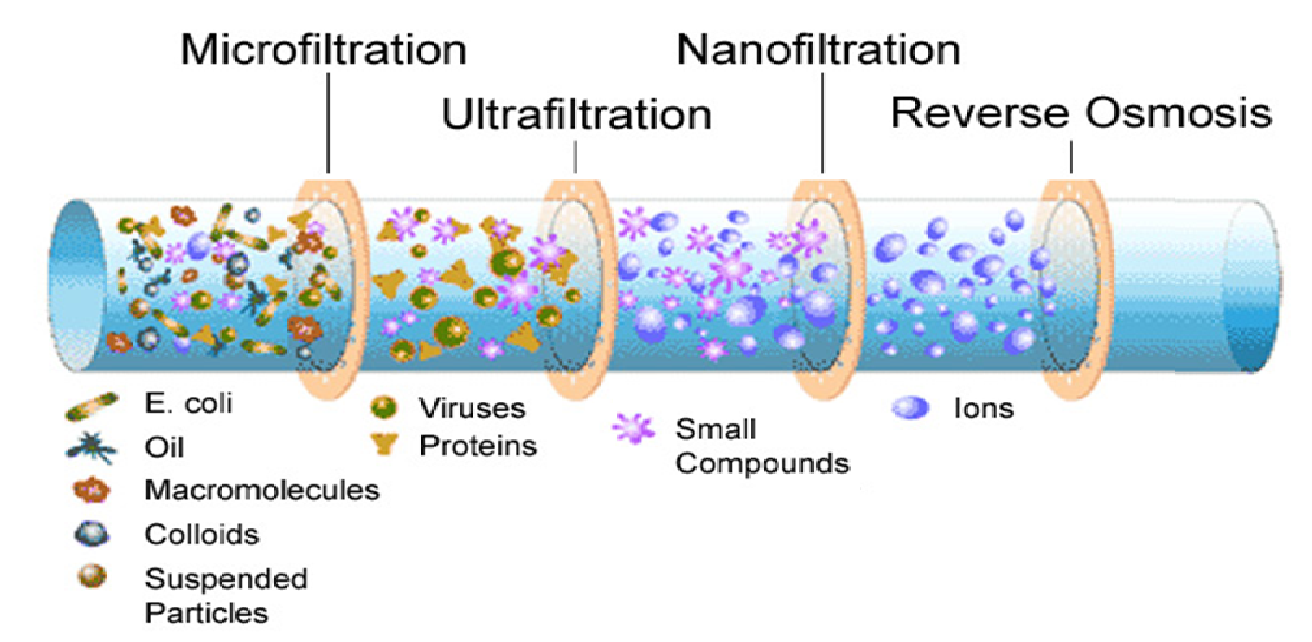Filtration is a process of removing particulate matter from water by forcing the water through a porous media. This porous media can be natural, in the case of sand, gravel and clay, or it can be a membrane wall made of various materials. Sometimes, large particles are settled before filtration; this is called sedimentation.
An ultrafiltration filter has a pore size around 0.01 micron. A microfiltration filter has a pore size
around 0.1 micron, so when water undergoes microfiltration, many microorganisms are removed, but viruses remain in the water. Ultrafiltration would remove these larger particles, and may remove some viruses. Neither microfiltration nor ultrafiltration can remove dissolved substances unless they are first adsorbed (with activated carbon) or coagulated (with alum or iron salts).
Nanofiltration is a relatively recent membrane filtration process used most often with low total dissolved solids water such as surface water and fresh groundwater, with the purpose of softening (polyvalent cation removal) and removal of disinfection by-product precursors such as natural organic matter and synthetic organic matter.
NANOFILTRATION (NF) originates in the 1950s, where loose reverse osmosis (RO) or tight ultrafiltration (UF) membranes were used to produce potable water from saline solutions. Today, it has evolved as a membrane technology in its own right, recognising that despite the potential for NF to solve many industrial separation problems, the actual number of uses are limited by the necessity for selectivity and stability flux improvements.
A nanofiltration filter has a pore size around 0.001 micron. Nanofiltration removes most organic molecules, nearly all viruses, most of the natural organic matter and a range of salts. Nanofiltration removes divalent ions, which make water hard, so nanofiltration is often used to soften hard water.
Reverse osmosis filters have a pore size around 0.0001 micron. After water passes through a
reverse osmosis filter, it is essentially pure water. In addition to removing all organic molecules
and viruses, reverse osmosis also removes most minerals that are present in the water. Reverse osmosis removes monovalent ions, which means that it desalinates the water. To understand how reverse osmosis works, it is helpful to understand osmosis.

 FB
FB










